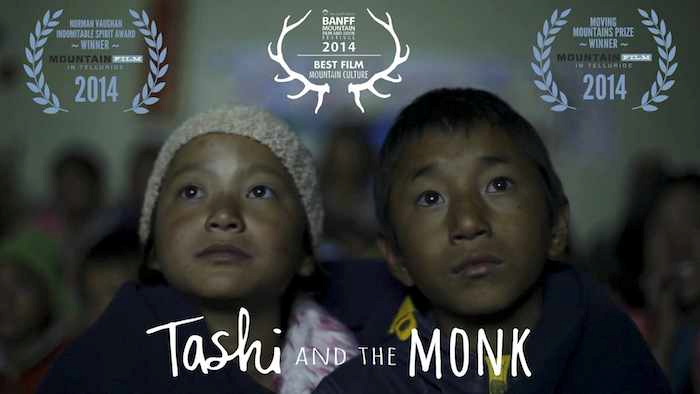An accidental baby born to a very young woman in the state of Arunachal Pradesh in India—one of the most remote and disadvantaged areas of the Himalayan region—Lobsang Phuntsok was considered to be an “uninvited guest of the universe.” Having started his life as a difficult, unruly boy, Lobsang was sent to a monastery in South India, where he slowly started to change his ways for the better. Against all odds, he was handpicked by His Holiness The Dalai Lama and the Tibetan government in exile to undertake extensive Buddhist training in Dharamsala. He subsequently spent several years spreading the Dharma in the United States and Canada.
In 2006, the monk decided to leave North America and, despite a lack of training and resources, he returned to the Himalayan region of his early childhood and opened a community for orphaned and disadvantaged children called Jhamtse Gatsal—which translates as the Garden of Love and Compassion. The award winning 40-minute long documentary “Tashi and the Monk” centers on 5-year-old Tashi, who is new to the community, and who—similarly to young Lobsang—is quite a handful. As evidenced in the first half of the film, Tashi struggles to make positive connections with children and adults alike, and we witness her throwing tantrums and inflicting violence on other members of Jhamtse Gatsal.
In order to lighten the burden of the disadvantaged communities in the area, Lobsang tends to pick the most difficult of children to join his sanctuary; because there are no child psychologists or other clinical professionals on the premises, as a viewer one cannot help but wonder at how these children will be adequately supported as they mature. This is particularly true of Tashi, who appears so isolated and destructive in her suffering. But as the film progresses and we witness Tashi’s journey, it becomes increasingly apparent that there is something valuable at play here. Lobsang encourages one of the older children to take the troubled girl under his wing, and little by little she begins to come out of her shell.
As captured by filmmakers Andrew Hinton and Johnny Burke, Jhamtse Gatsal fosters a strong sense of purpose, togetherness and unconditional love in its members. The children are deeply involved in the success of their community: together they complete chores such as bathing, cleaning and cooking, and true to their young selves they add play and songs to their daily tasks. The footage is incredibly inspiring and brings joy to the viewer. It also gives us insight into what motivates Lobsang in this difficult mission:
“In many ways when I see they are laughing, screaming and playing I feel I am living my childhood. And I am lucky that we have 85 children now and I miss only one childhood but I got the opportunity to live 85 childhoods.”
And a tough mission it is, because as Lobsang explains, he has to turn down numerous children in order to meet the needs of those he has already taken in. For those who make it to Jhamtse Gatsal, however, the future appears to be bright and full of hope.


